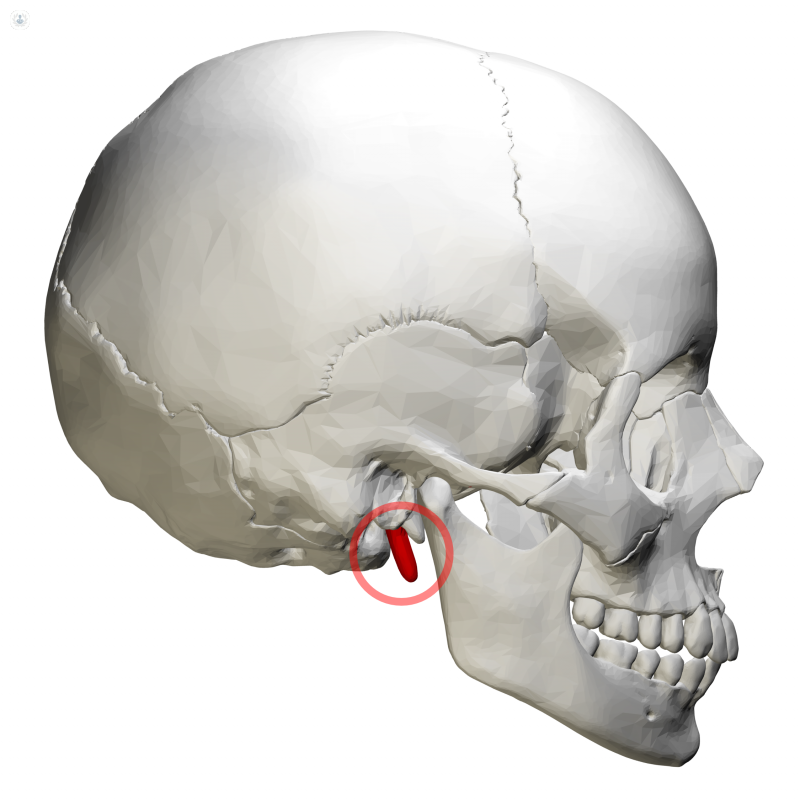Differential diagnosis: Eagle syndrome
Escrito por:If you have ever watched an episode of House, you’ll know that sometimes, even doctors can find it difficult to tell what is wrong with you. With a myriad of illnesses and conditions out there, it is no surprise that many of them can cause the same symptom. Something like a sore throat, for example, can be a sign of anything from the common cold to cancer.
However, when the problem is a rare condition, the doctor must have the expertise to analyse the symptoms, medical history, and lifestyle of the patient to reach the correct diagnosis. Top ENT/Head and Neck/Thyroid surgeon Mr Jonathan Hughes told Top Doctors about one of his cases – a differential diagnosis worthy of Hugh Laurie’s grumpy TV physician:

The facts:
- 69-year-old female patient
- The patient had been suffering soreness in the left side of the throat for 30+ years.
- She had had difficulty swallowing (dysphagia) for 6 months.
- She was eating a normal diet and not losing weight.
- Ex-smoker
- Drank minimal alcohol
- She had her tonsils removed as a child due to repeated bouts of tonsillitis.
- She had recently been to see an ENT specialist, who had found nothing wrong to explain the throat pain.
Examining the patient
After checking the patient’s history, the next step is to analyse the patient’s physical condition and the symptoms that are presenting. The most important thing is to rule out pharyngeal or laryngeal cancer (especially in patients over 40, and/or with a history of smoking or drinking). In the case of this patient, several tests were needed:
- Physical examination (palpation) of the neck – tenderness and fullness was found in the left neck, below the jaw.
- Mouth examination – revealed a definite lump in the inferior tonsillar fossa (the region where the tonsils are located).
- Nasal endoscopy – a flexible nasal endoscope was used to examine the throat. The larynx and pharynx appeared normal.
- CT scan of the neck – this provided an inside look at what was going on in the patient’s neck, and revealed that the styloid process on the left side was elongated (45mm), in contrast to the 25mm right styloid process.

Diagnosis: Eagle syndrome
Eagle syndrome is a rare condition caused by an elongated styloid process. This is a small, pointed piece of bone located just behind the ear, jutting forwards and downwards into the neck. It is part of the temporal bone of the skull, and serves to anchor several muscles and ligaments that connect to the tongue and larynx. It is considered to be elongated if longer than 3cm, although even if it exceeds this length it rarely causes symptoms.
The causes of Eagle syndrome are not well understood. It is thought that calcification of the styloid ligament is to blame, but there may be a genetic factor in who develops it.
The differential diagnosis involves ruling out cancer, dental problems (such as malocclusion), recurrent tonsillitis or pharyngitis, glossopharyngeal or trigeminal neuralgia, and arthritis of cervical vertebrae. Patients may have to see GPs, dentists, neurologists, neurosurgeons, psychiatrists and ENT surgeons to reach the correct diagnosis.
Treatment of Eagle syndrome
If patients only experience minor symptoms, they may be content to live with Eagle syndrome, while others may require medication, such as NSAIDs (non-steroidal anti-inflammatory drugs).
However, the majority of patients opt for surgery, which is what this patient did. There are two options: transoral and transcervical (entering via the neck).
The transoral approach is the faster and less risky of the two, usually performed as a day case. The surgeon enters via the mouth, performing a tonsillectomy for access, and removing the styloid process, and suturing the pharyngeal mucosa shut afterwards. Our patient was treated this way.
The procedure was a complete success, with symptoms resolving immediately.


